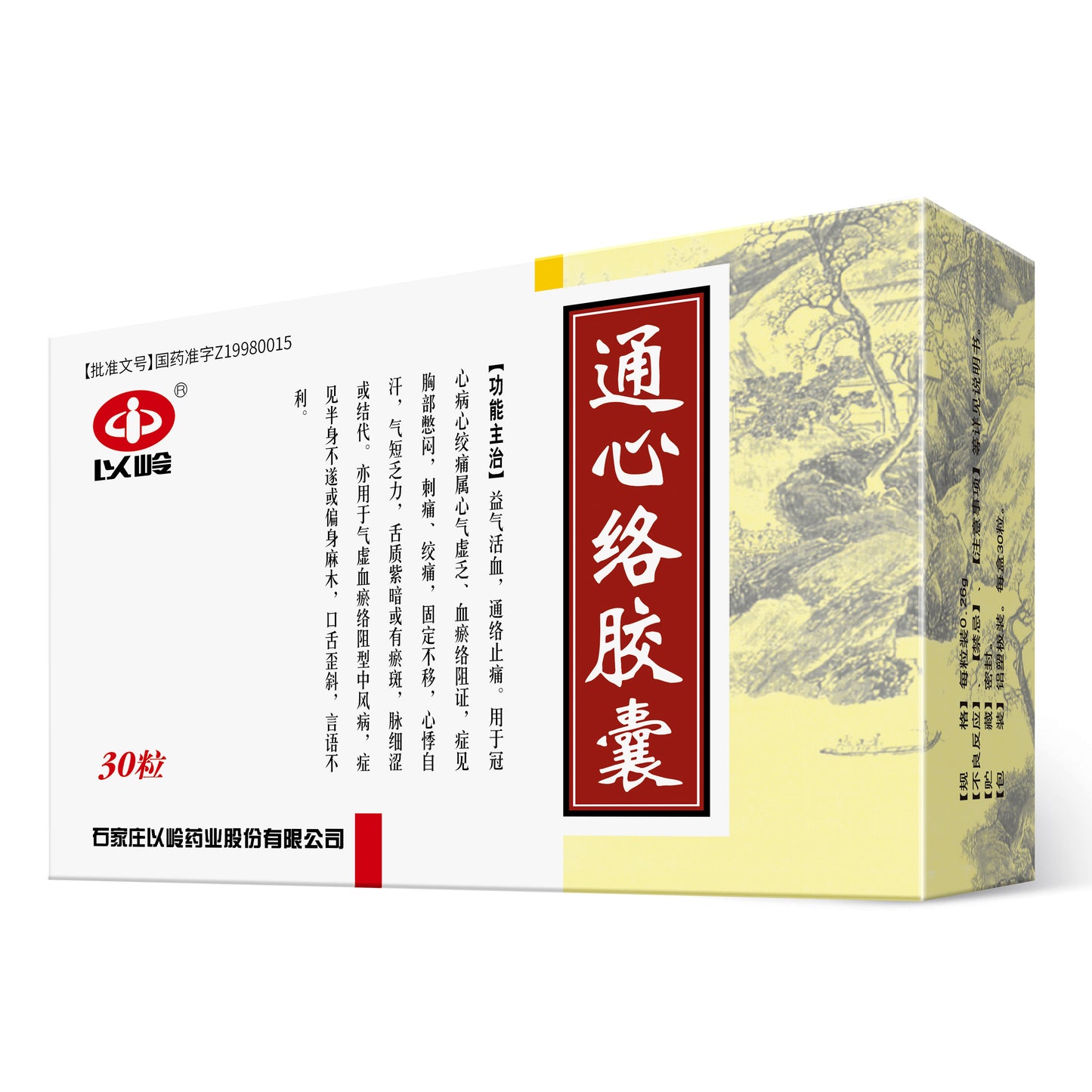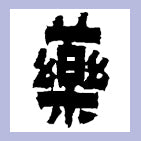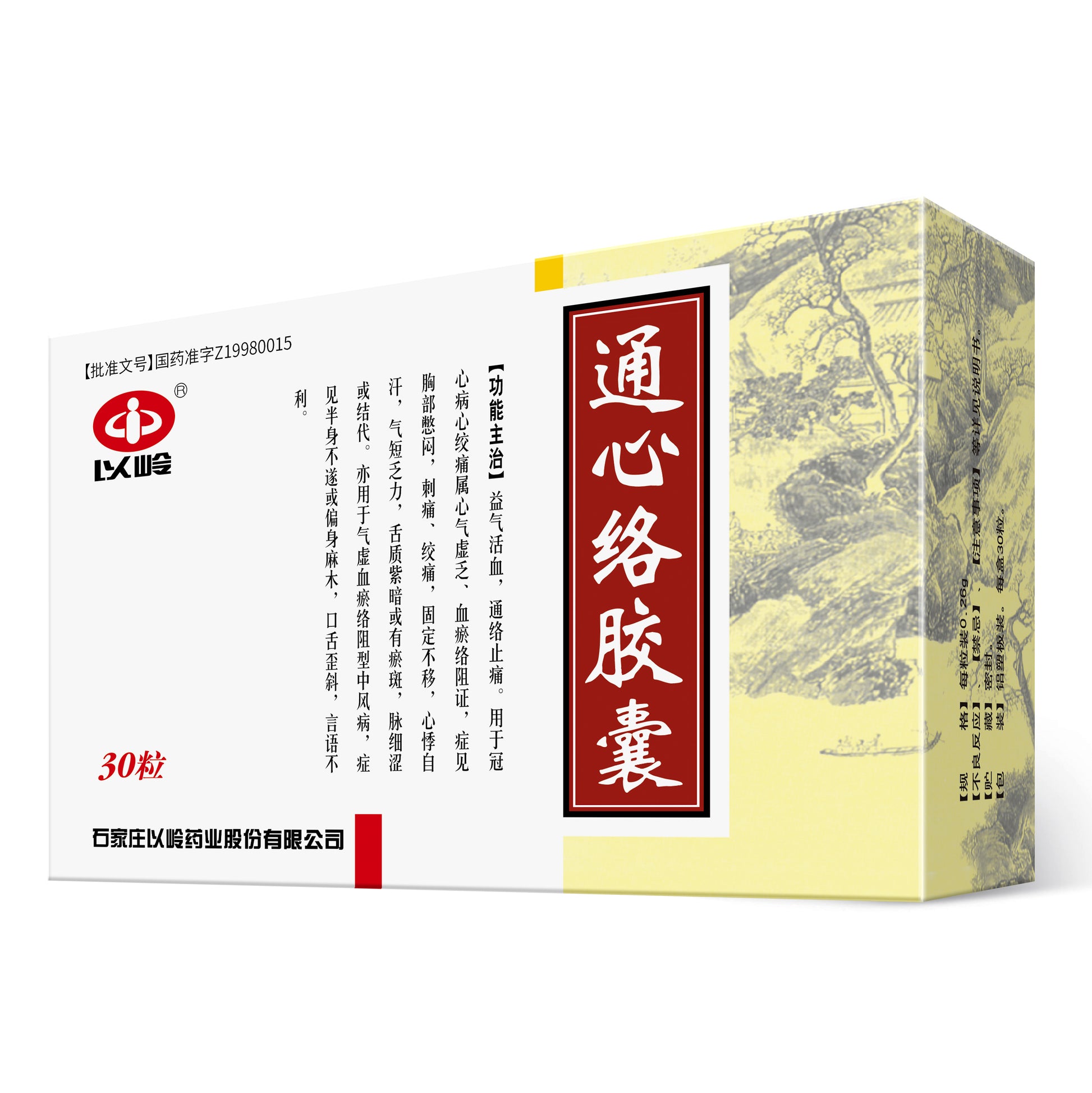Shijiazhuang Yiling Pharmaceutical Co., Ltd
通心络胶囊, Tongxinluo Jiaonang, Tong Xin Luo Jiao Nang, 0.26g*30 Capsules, for Coronary Heart Disease
通心络胶囊, Tongxinluo Jiaonang, Tong Xin Luo Jiao Nang, 0.26g*30 Capsules, for Coronary Heart Disease
Couldn't load pickup availability
Drug Name
Tongxinluo Capsule
TongXinLuoJiaoNang
Tongxinluo Jiaonang
Ingredients
Ginseng, Leech, Scorpion, Red Peony Root, Cicada Slough, Earthworm, Centipede, Sandalwood, Dalbergia Odorifera, Frankincense (Prepared), Ziziphus Jujuba Seed (Roasted), Borneol
Appearance
This product is a hard capsule, with gray-brown to grayish-brown granules and powder inside. It has a fragrant odor, slightly fishy taste, and is slightly salty and bitter.
Functions and Indications
It invigorates qi and promotes blood circulation, unblocks the meridians and alleviates pain. It is used for coronary heart disease with angina pectoris belonging to the syndrome of qi deficiency of the heart and blood stagnation obstructing the meridians, manifested as chest distress, stabbing pain, fixed pain, palpitations with spontaneous sweating, shortness of breath and fatigue, purple-dark tongue with ecchymosis, and thin,涩 pulse or intermittent pulse. It is also used for stroke with syndrome of qi deficiency, blood stagnation, and meridian obstruction, manifested as hemiplegia or partial numbness, deviation of the mouth and tongue, and speech impairment.
Dosage
Oral. 2 to 4 capsules each time, 3 times a day.
Adverse Reactions
Individual patients may experience gastric discomfort after using this medicine.
Contraindications
It is contraindicated in patients with hemorrhagic disorders, pregnant women, women during menstruation, and stroke patients with syndrome of yin deficiency and excessive fire.
Precautions
For patients who experience gastric discomfort after taking the medicine, it is advisable to take it after meals.
Special Population Medication Use - Pregnancy and Lactation Notes
Pregnant women and women during menstruation are prohibited from using this medicine.
Drug Interactions
Non-clinical pharmacodynamics test results suggest that this product can reduce the degree of myocardial ischemia in acute myocardial infarction models in dogs and rats, decrease the scope of myocardial ischemia, improve myocardial blood supply and oxygenation, increase coronary blood flow and left ventricular work; it can reduce the no-reflow area in reperfusion models of acute myocardial infarction in pigs and decrease the myocardial infarction area; it can inhibit the proliferation of myocardial collagen fibers after myocardial infarction in rats, reduce the deposition of collagen, decrease the content of angiotensin II (Ang II) in myocardial tissue, inhibit ventricular remodeling, and improve cardiac function; it can reduce the cerebral infarction area in rat models of focal cerebral ischemia, decrease cerebrovascular permeability, and alleviate cerebral edema; it can alleviate neuronal cell degeneration and necrosis, disappearance of Nissl bodies, and other pathological damage in mouse models of global cerebral ischemia, improve neurobehavioral outcomes, protect ischemic brain tissue, increase superoxide dismutase (SOD) activity in brain tissue, and reduce the content of malondialdehyde (MDA), a lipid peroxidation product; it can lower serum total cholesterol and low-density lipoprotein in rats with hyperlipidemia, increase high-density lipoprotein, and inhibit thrombosis and platelet aggregation in rats. Additionally, exploratory studies on the mechanism of action have been conducted, and the results suggest that this product may protect the brain capillaries and promote neovascularization by reducing excitatory amino acids and endothelial cell (ET) content in rat models of middle cerebral artery occlusion, inhibiting ET gene expression, and promoting the expression of vascular endothelial growth factor in rat models of cerebral ischemia with middle cerebral artery embolism; it can improve endothelial function in rabbit models of atherosclerosis, reduce the damage to endothelium-dependent vasodilation caused by hypercholesterolemia, enhance eNOS activity by increasing the expression of the eNOS gene in mice with myocardial ischemia, and increase plasma and tissue levels of nitric oxide (NO); it can inhibit the expression of mitogen-activated protein kinase (MAPK) and vascular intimal proliferation after angioplasty in rabbits, lower blood TC, LDL-C, and ET levels, and increase NO levels; it can stabilize vulnerable plaques by reducing lipid content within plaques, increasing plaque fibrous cap thickness, lowering blood lipids and plasma fibrinogen levels, and inhibiting the expression of inflammatory factors in rabbit models of vulnerable plaques; it inhibits coronary artery spasms induced by 5-hydroxytryptamine in miniature pigs. Through these multiple effects, it exerts cardiocerebrovascular protection and anti-thrombotic effects.
Pharmacological Effects
Experiments on acute myocardial ischemia in dogs with coronary artery ligation have shown that this product can improve the degree of acute myocardial ischemia in dogs and reduce the scope of myocardial infarction. It can also increase coronary blood flow in normal dogs and decrease serum total cholesterol and low-density lipoprotein levels in rats fed a high-fat diet. In experiments on focal cerebral ischemia in rats caused by ligation of the external carotid artery, this product has the effect of reducing cerebral infarction area. Animal experiments also suggest that this product has certain effects on lowering blood viscosity, inhibiting platelet aggregation, and prolonging coagulation time.
Storage
Keep tightly closed and store in a cool, dry place.
Specification
Each capsule contains 0.26 grams, with 30 capsules per box.
Expiration
24 months
If you are seeking additional discounts or have an interest in purchasing other Chinese medications, please feel free to contact us at any time. We are fully dedicated to offering you comprehensive services tailored to your individual needs.
Share


